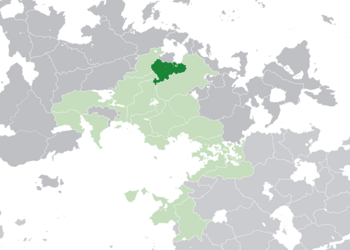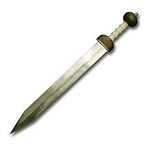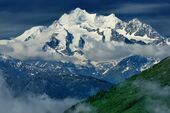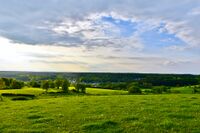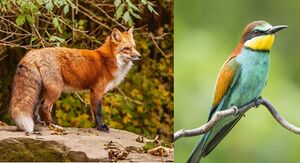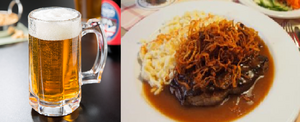New Sebronia
This article is incomplete because it is pending further input from participants, or it is a work-in-progress by one author. Please comment on this article's talk page to share your input, comments and questions. Note: To contribute to this article, you may need to seek help from the author(s) of this page. |
New Republic of Sebronia
New Sebric Republic
| |||||||||
|---|---|---|---|---|---|---|---|---|---|
Motto: "Bargen, vældaren og gråslanden ars verent, so dett demokrati yber tei regantte!" "Mountains, forests and grasslands are united for democracy to rule over them!" | |||||||||
Anthem: Hymn of Unity | |||||||||
Location of New Sebronia (Dark Green)
| |||||||||
| Capital and largest city | Haæstre | ||||||||
| Official languages | Sebric Laverre (Semi-official) | ||||||||
| Recognised national languages | Traditional Sebric | ||||||||
| Recognised regional languages | Kistol | ||||||||
| Demonym(s) | Sebric(s) | ||||||||
| Government | Federal democratic parliamentary Republic | ||||||||
• Federal President | Benjamin Tenidi, LsM (since 2016) | ||||||||
• Federal Chancellor | Mikaela Valdt, SGP (since 2020) | ||||||||
| Legislature | Sebric Parliament | ||||||||
| Federal Council | |||||||||
| Federal Assembly | |||||||||
| Establishment | |||||||||
• First Sebric states | 1000 BCE | ||||||||
• Declaration of the Alaris Confederation | 1578 | ||||||||
• Establishment of the Sebric Empire | 1733 | ||||||||
• Declaration of the New Republic | May 14th 1912 | ||||||||
| Area | |||||||||
• Total | 711,937 km2 (274,880 sq mi) | ||||||||
| Population | |||||||||
• 2022 estimate | 112,501,000 | ||||||||
• 2021 census | 112,048,592 | ||||||||
• Density | 157.39/km2 (407.6/sq mi) | ||||||||
| GDP (PPP) | 2021 estimate | ||||||||
• Total | 3.97 Trillion ACU | ||||||||
• Per capita | 35,390 ACU (1:0.9536) | ||||||||
| GDP (nominal) | 2021 estimate | ||||||||
• Total | 4.16 Trillion ACU | ||||||||
• Per capita | 37,112 ACU | ||||||||
| Gini (2021) | medium | ||||||||
| HDI (2021) | very high | ||||||||
| Currency | Eri (ξ) (ERI) | ||||||||
| Time zone | UTC-4 | ||||||||
• Summer (DST) | UTC-4 (not observed) | ||||||||
| Date format | dd-mm-yyyy | ||||||||
| Driving side | right | ||||||||
| Calling code | +33 | ||||||||
| Internet TLD | .ns | ||||||||
New Sebronia (Sebric: Navæ Sebroni, Laverre: Nouve Sebrònne), officially called the New Republic of Sebronia (Sebric: Navæse Republike Sebroni ( listen), Laverre: Republice Nouve dela Sebrònne (
listen)), is a country in the Norterrics in north-eastern Thuadia. It borders Schuzeland to the north, Bakyern to the east, Kistolia to the west and Tiskaiya and Qazhshava to the south-west and is the most populous country in its neighborhood. New Sebronia is situated at the coast of the Norterric Sea to its north and the Sydhoesh mountain range to its east, defining a semi-natural border between itself and Bakyern. The three biggest cities Haæstre (the nation's political and financial capital), Deimeka and Den Edeldec, all three located on the northern coast, make up a relatively big percentage of the nation's population of 112 million - living in an area of 711,937 km² (274,880 mi²), which results in sparsely populated regions in the western and southern parts of the nation. Its other metropolitan cities such as Monnem, Sibastre and Navæbariken are also of great economic and political importance.
With a nominal Gross Domestic Product of 4.16 Trillion ACU, New Sebronia has one of the strongest economies in the Sekidean Union - surpassing all its neighbors except Bakyern - and plays a relatively big role in the regional and international automotive, chemical and electronics industries . It has a Human Development Index of 0.896 and is one of the most progressive nations in terms of ecofriendliness and social security, offering social and financial support to its citizens, including universal health care, tuition-free university education, government-funded child support for financially struggling families and unemployment benefits. New Sebronia is member of multiple supra- and international organizations, most noteworthy the Sekidean Union, AWA (including UASA, IGP, AHO and more) and the International Court.
Ethymology
The Common name is a derivative of the Sebric name Sebroni, the modernised version of the Traditional Sebric word Sabroniyen, which comes from the term "Sabrer onycer lendiyen" ("Sunny green place"). The term was used by batrecist monks to name the flat lands north-west of the Sydhoesh Mountain Range and became very common among the people who lived there, as evidenced by many ancient writings in which the term is mentioned. The first script mentioning the word Sabroniyen as a name has been dated back to the 2nd century CE.
Other names used for Sebronia were/are:
- Batria, a derivation from Sebronia's main cultural group, Batrec. The term was originally used to refer to the people and not the territory itself, though the meaning drifted over time.
- Hlītt Lėndiya, literally meaning "Warm place", is believed to be the predecessor to the term Sabrer onycer lendiyen. It was mentioned in inscriptures as old as 3000 years found in the Lartredt River Valley.
- Sevratte, used mainly in some dialects of the Batro-Mitlanderan language back until 2300 BCE.
- ដីស្ងាត់ ("Dei snagt"), meaning "Land of the mutes" or "Quiet land" is the Preimeai term for Sebronia. The origin behind the naming was the Preimean perception of Sebrics, finding them not very talkative. This also became a well-known Sebric stereotype to this date, its accuracy is debated.
History
First Sebric civilizations
First signs of civilizations in today's Sebronia have been found to be in the Lartredt River Valley, in which papyrus scripts - dated back to roughly 2100 BCE - have been found in est. 4200 years old stone ruins, scattered around the valley. The inscriptions have not been fully translated and large parts are missing, though mass findings like spears and axes highly suggest these settlements in said river valley to have existed back in 4000 BCE. The scarce amount of intact scripts, vases and other antiquities leads to suspect that a possible series of unrecorded wars lead to the complete destruction of many ancient villages. More signs of separate civilizations were found near the Sherken Lake Group and in the far-east, near today's Sebro-Bakyernian border, dated back to ~3800 BCE. Carvings and scriptures were written in at the time local Proto-Thuado-Thrismaran languages like Karkool, Proto-Germano-Sarbish or Batro-Mitlanderan, which lay the foundation for the Proto-Batro language and then the in ~0-500 CE developing and spreading Traditional Sebric language.
First batrecist civilizations came to be in the north-eastern parts of the Sydhoesh Mountain Range, separating Sebronia from today's Bakyern. At around 1000 BCE, those civilizations formed the first sebric states, known as the Batrec City States. During that time, a big increase of art and literature shaped the epoch, as batrecist literature spread to more and more newly formed sebric states. Not only did this lead to the spreading of the batrecist religion in Sebronia, but also many orthological and grammatical reforms of the equally fast spreading Proto-Batro language. Many separate folk beliefs contradicted with the rising popularity of the new religion, causing the first religious wars between sebric states, often resulting in destruction of cultural artifacts and annexations.
Great Migration
TBA
Alaris Confederation/Confederacy of Alaris
TBA
Sebric Empire
TBA
Sebronia in the Great War
TBA
The Sebric Revolution
TBA
New Sebronia - Sebronia since 1912
TBA
The Dutchy-Sebric War
TBA
Geography
New Sebronia is located at the southern coast of the Norterric Sea in Thuadia, bordering Schuzeland to the north, Bakyern to the east, Kistolia to the west and Tiskaiya and Qazhshava to the south-west. With 711,937 km^2, New Sebronia is smaller than 4 of its 5 neighbors, though it has the highest population out of the 6 nations, due to its relatively high population density. Its many big cities, in which a majority of the sebric people live, result in much gras- and farmland as well as many large forests, especially in the western and south-western parts of New Sebronia.
Climate
Due to New Sebronia being located at an latitude of ~17-26°, extreme temperature changes between summer and winter aren't very common. In addition to the rather temperate climate in that area it makes New Sebronia a very attractive tourist destination, especially at the northern coast in summer and the mountains in the east in winter. Especially in the south and west temperatures rarely fall to less than 3°C, while in the eastern mountain area, in can get much colder during winter due to high altitudes.
Biodiversity
Since New Sebronia values and protects its environment, its biodiversity is still very multifarious. About 32.2% of New Sebronias total land area is covered by forests, in which the national animal, the fox, lives. Also well-known animals are deers, brownbears, boars, mardens, lynxes, the Mybæki (also referred to as Bee-eater), and approximately 50,100 other animal species living in New Sebronia, of which 33,600 are insects. Many of those species live in national parks or nature reserves so they don't go extinct, same goes for some of the 10,200 plant species.
Politics
TBA
Government and Parties
| Office | Office Bearer | Party | In office since: | |
|---|---|---|---|---|
| Federal President | 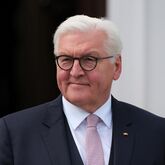
|
Benjamin Tenidi Born 1957 (63 years old) |
LsM | 2016 |
| Federal Chancellor | 
|
Mikaela Valdt Born 1982 (38 years old) |
SGP | 2020 |
| Federal Minister of Finance | 
|
Florian J. Markæl Born 1970 (50 years old) |
LsM | 2012 |
| Federal Minister of the Interior | 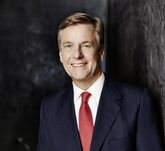
|
Jonatån Kai Born 1976 (44 years old) |
LsM | 2016 |
| Federal Minister of Foreign Affairs | 
|
Manuel Joahdyrn Born 1953 (67 years old) |
SGP | 2016 |
| Federal Minister of Economy and Development | 
|
Alexander Luvér Born 1982 (38 years old) |
SGP | 2016 |
| Federal Minister of Justice | 
|
Hanna Mia Fjelbreg Born 1989 (31 years old) |
LsM | 2020 |
| Federal Minister of Labor and Social Affairs | 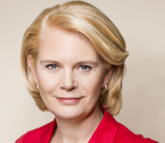
|
Enatásie Daqueaut Born 1969 (51 years old) |
SGP | 2016 |
| Federal Minister of Defense | 
|
Volker Inimæzieer Born 1974 (46 years old) |
LsM | 2020 |
| Federal Minister of Food and Agriculture | 
|
Ialda Merit Kamir Born 1975 (45 years old) |
SGP | 2012 |
| Federal Minister of Family | 
|
Eva Låara-Olbarge Born 1979 (41 years old) |
SGP | 2016 |
| Federal Minister of Health | 
|
Chourd Felzi Born 1984 (36 years old) |
SGP | 2020 |
| Federal Minister of Transport and Digital Infrastructure | 
|
Chadvik A. Ukami Born 1968 (52 years old) |
LsM | 2012 |
| Federal Minister of the Environment | 
|
Peet-Arjen Heras Born 1965 (55 years old) |
SGP | 2016 |
| Federal Minister of Education and Research | 
|
Emarila Geemaæs Born 1976 (44 years old) |
LsM | 2016 |
| Federal Minister of Energy and Technology | 
|
Ai Kawisaka Born 1991 (29 years old) |
LsM | 2020 |
Federal states and Administrative Districts
As a federal republic, New Sebronia consits of 18 states, TBA
Law
TBA
Government Spending
TBA
Foreign relations
TBA
Military
TBA
Economy
TBA
Demographics
Population
TBA
Largest cities or towns in New Sebronia
Federal Census Bureau (2019) | |||||||||
|---|---|---|---|---|---|---|---|---|---|
| Rank | Federal State | Pop. | Rank | Federal State | Pop. | ||||
Haæstre  Deimeka |
1 | Haæstre | Haæstre State | 6,595,277 | 11 | Firtenjor | Valania | 433,987 |  Den Edeldec  Navæbariken |
| 2 | Deimeka | Sherkenlakes | 4,216,013 | 12 | Alaris City | Alaris | 403,364 | ||
| 3 | Den Edeldec | Vafitporte | 4,100,192 | 13 | Saikabarge | Merlin | 382,377 | ||
| 4 | Navæbariken | Borenia | 1,703,124 | 14 | Breggenvål | Inbrek-Lyren | 350,231 | ||
| 5 | Pistora | Pistrente | 860,007 | 15 | Ferrenhert an bæ Kreiss | Sherkenlakes | 325,111 | ||
| 6 | Sibastre | Lower Lantery | 709,663 | 16 | Hødelstæt | Sarben-Osberland | 310,237 | ||
| 7 | Felstæt | Felstæt | 620,046 | 17 | Valheem | Haæstre State | 277,292 | ||
| 8 | Håara | Pistrente | 605,234 | 18 | Dresdtaldenheem | Alaris | 266,420 | ||
| 9 | Monnem | Sarben-Osberland | 561,125 | 19 | Itæstre | Valania | 261,822 | ||
| 10 | Alanbargen | Tretvel | 470,230 | 20 | Lilac | Elbrect | 241,499 | ||
Language
TBA
Sebric
TBA
Traditional Sebric
TBA
Religion
TBA
Healthcare
TBA
Education
TBA
Culture
Cuisine
The sebric cuisine is broadly diversified, but is most known for meat and beer-like alcoholics, as well as fish on the coast. Sebrics are said to have a sensitive palate towards sour food, but that is mostly a myth. In New Sebronia, many dishes are cooked with rather spicy ingredients, the use of pepper and curry spices is relatively high. Fish is almost always eaten with sides like potatoes or fries, though it is only popular in the north, at the coast. Because of the big, flat lands in temperate climate, agriculture is a big industry in New Sebronia. Most sebric farmers and consumers produce and consume organic products like apples and other fruits, and that high supply is why organic products are alot cheaper to buy than in other countries.
The national dish of New Sebronia is the traditionally called "Sebri Rumpståk", a rumpsteak with molten herb butter in onion-beer-sauce, together with fried onions and thick spaetzles, which are called "Sepæselen". National drink is the "Vøderbijr", a kind of beer with a relatively high alcohol percentage of 13%. It is often drunk on important parties and festivals like the Days of Equilibrium, but also traditionally on the 18th. birthday of a boy, celebrating his adulthood.
Art & Music
TBA
Sports
TBA
Literature
TBA




